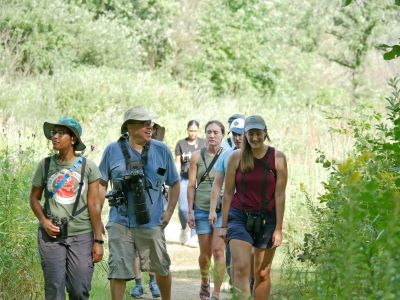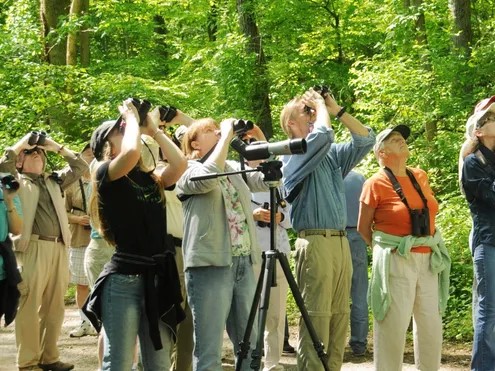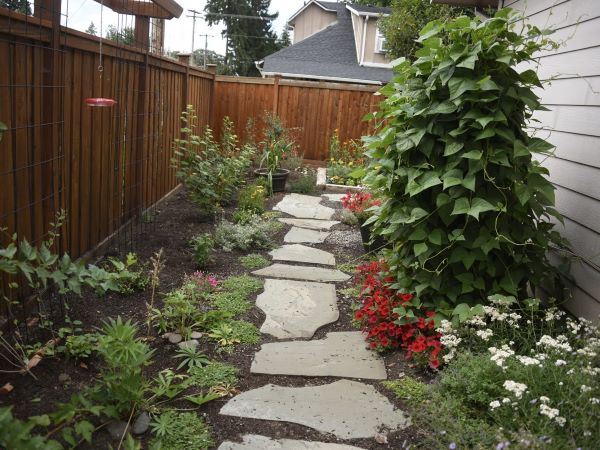Our First Saturday Bird Outings, created as part of our commitment to the Lane Audubon…

 “Where Have All MY Birds Gone?”
“Where Have All MY Birds Gone?”
That is the question I hear dozens of times a year while answering the Audubon Phone. Lane County Audubon Society (LCAS) has a phone number people call, seeking answers to all sorts of nature-related questions. We receive calls about injured wildlife, impending nearby “development” that will destroy wildlife habitat, neighborhood cats, feeding birds, bird identification, swifts at Agate Hall, building a bird house, buying bird seed, buying binoculars, and more. But for the past several years some of the most common and desperate calls have been concerning the reduction or even total lack of birds in their yards.
I keep a list near the phone of possible reasons for this unfortunate situation. I start by asking a few questions about where they live in case I know about something currently happening in their part of town that may be adversely affecting birds. If the call is late in the summer or early fall, I mention that some of our summer resident birds are starting their migration south and the winter residents perhaps have not arrived yet. I mention that a few of the birds in this area are altitudinal or elevational migrants, including Varied Thrushes, Dark-eyed Juncos, and Belted Kingfishers. Until the cold weather and snow start to arrive in the mountains, those species have not yet arrived in the valley.
Several bird species may be going through their semi-annual molt. During a molt some birds cannot fly for a few days so they tend to hunker down and find a good hiding place away from predators. They are certainly less active during this time and try not to be seen by anything, including you. The fall molt happens just before migration so the bird will have new, strong feathers to help with the long migration flight.
The next few questions refer directly to the caller’s yard. The first one is a little controversial, but I ask if they have an outdoor cat, or if the yard is visited by neighbors’ cats or feral cats. Cats kill millions of birds every year in the United States. If they have an outdoor cat, I encourage them to make their outdoor cat into an indoor cat and I refer them to the National Audubon Society website or the Cornell University College of Ornithology website. In cities, this is frequently the number one reason for bird decline.
A new dog that hangs out in the yard may be discouraging birds from using the area. Dogs generally may not be that interested in birds, but some will chase birds and they may even harm baby birds that have fallen out of the nest or injured birds that cannot fly away.
Has there been any recent clearing of trees, brush, or shrubs in the yard or in the surrounding neighborhood? Less habitat means fewer birds. I discuss making their yards more desirable for birds by planting native shrubs, bushes, flowers, and trees and having less grass. I give them permission to have a “messy” yard and to stop worrying about what the neighbors will think. I encourage them to leave some garden vegetables for the birds and to leave their garden “messy” over the winter.
Does the caller or nearby neighbors use pesticides or fertilizers? I explain that these are poisons that kill animals, including birds. Birds that eat insects that have ingested insecticides may become sick and unable to avoid predators or search for food. Birds may also die directly from the pesticide. Rodenticides in a pellet or grain form may be eaten directly by birds. Rodents that are dying from being poisoned may be eaten by birds, especially raptors, which are then also poisoned. Pesticides in the form of pellets used to kill slugs and snails may also be eaten by birds. Of course, cats, dogs, other pets, and even children may also eat these poisons. I explain that there are alternatives to all chemical pesticides and the alternative frequently does a better job, is cheaper, and won’t harm birds and other animals.
If I still have their attention, I ask if birds hit their windows. I explain that birds see the reflection of the background in regular window glass. If it is a reflection of trees and shrubs, the bird thinks it can fly to that nice tree and it smacks into the window instead. Non-reflective glass is the best way to prevent window strikes. This is also very expensive if all the windows need to be replaced, or at least the ones that are being hit by birds. If they are building a new home, installing non-reflective window glass will really reduce bird strikes. If non-reflective glass is cost-prohibitive, then placing non-reflective strips of tape on the windows will help. These strips should be four to six inches apart. I have friends who hang old CDs on a string, place colorful ribbons on the windows, and use all sorts of things that will sway in the wind and distract the birds. All these distractions, including the non-reflective tape, must be on the outside of the window.
Seed-eating birds may leave the yard in the summer to seek water. As small ponds, creeks, and low areas dry up, birds need to find water, especially seed eaters. Insect eaters get some of their moisture needs from the juicy bugs they eat, but seed-eaters need water. Birds also like water for bathing. So, I suggest adding a water feature to the yard. It can be as simple as an old-fashioned birdbath, or a more complicated water fountain with a recirculating pump. The basin part of any birdbath should be sloped and shallow because bird legs are only a couple of inches long. Be sure to wash out the bath at least weekly to kill mosquito larvae and clean it thoroughly to kill algae, bacteria, and viruses. If you have an outdoor cat, then perhaps a birdbath is not a good idea.
If the caller has not fallen asleep by now, I mention the current world-wide decline of birds, which of course includes our local birds. Coincidentally, about the same time I started writing this essay, a team of more than 100 scientists from all over the world released the results of their research showing the loss of over 2.9 billion (with a “B”) birds over the past 50 years. In North America, 604 bird species were studied. The report further states that 389 bird species in North America are vulnerable to extinction soon. More than half of these species are in Oregon, and many use our back yards. Anything we can do to slow down climate change and save habitat will help birds locally and globally.
I mentioned earlier that people call for many reasons and some just want a sympathetic ear from another person who is also concerned about the natural world. We encourage these discussions, but we also strongly suggest action. If many people do even a few little things in their own backyards to save habitat and protect birds, the cumulative effect can be tremendous. Then maybe the question “Where have all my birds gone?” will not have to be asked again.



